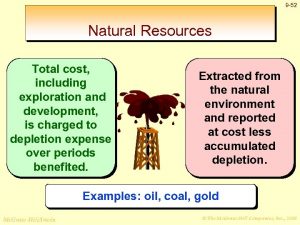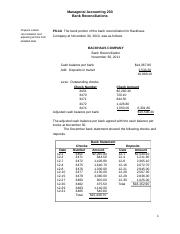
When calculating your net income, you’ll want to account for any interest that needs to be paid on outstanding debt. You can find how much revenue you have at the top of your income statement. If you run your own business, you know the ongoing expenses that can eat into your pockets. From employee wages to office supplies, it can be hard to understand how much you’ll actually take home after all these expenses. Hence, companies strive to optimize their cost structure and pricing strategies to reduce their spending on direct costs, for the sake of improving their net income (and thus, earnings per share, “EPS”).
How to Pay Yourself From an LLC [2024 Guide]
Lenders and investors sometimes prefer to use the operating net income to gauge the profitability of a business instead of the net income. The operating net income formula looks at the company’s profit from operations alone, it excludes income and expenses that are not part or related to the company’s core activities. Finding the net income on your income statement involves adding the total cost of sales and the total other expenses, and then deducting the result you got from the total revenue. Investors use the gross income to determine how much profit a company generates from producing and selling its goods and services. Net income helps investors to determine a company’s overall profitability. EBIT helps you understand how efficient you’re at managing your business.
How to Calculate Net Income: Examples & Formula
It depicts the inflow of funds resulting from the sale of goods and services. Further, the income statement also depicts the outflow of funds in the form of resources used to generate sales. Since the net income value by itself does not offer much insight into Apple’s profitability, we’ll calculate the net profit margin by dividing net income by revenue.
Ask Any Financial Question
- There are a few things to be aware of when including your net income on your tax returns.
- You can find how much revenue you have at the top of your income statement.
- For example, the word “profit” describes any revenue that remains after subtracting your expenses.
- Investors looking to evaluate a company’s performance can look at net income to determine how well they’re doing.
- The articles and research support materials available on this site are educational and are not intended to be investment or tax advice.
- For individuals, your salary is a source of income disclosed on a personal financial statement and a component of your gross income on a tax return.
- Accordingly, your business’s income statement represents its profitability.
It is a number that is useful to the business owner for the purpose of analysis and study. The business owner uses the net income figure and the other line items on the income statement to know how well the firm has performed in meeting the standards it has set. If you have total expenses that are more than your gross revenue, then you are going to have a negative income or a net loss. To help you calculate net income on your income statement, there are a few things for you to do. For the three months ended April 2, 2021, Coca-Cola reported $9.02 billion in revenue. It also earned $66 million in interest and $417 million in equity and other income.

More Products & Services
Below 20%, he says he may need to pause business growth or eat into working capital. “I only change my strategy and test things out when my net profit margin looks really healthy,” he adds. The net profit margin is a financial ratio of net profit to revenue, and is essential for understanding whether you are growing your business sustainably and with room to expand. On the net income other hand, the 16% net profit margin implies that for each dollar of revenue generated, $0.16 is left over. Suppose we’re tasked with calculating the gross income of a company, given the following financial data. Most often, the gross margin refers to the ratio between the gross profit and net revenue — however, there are exceptions, of course, such as Apple (AAPL).
- Lenders and investors sometimes prefer to use the operating net income to gauge the profitability of a business instead of the net income.
- The net loss may be shown on an income statement (profit and loss statement) with a minus sign or shown in parentheses.
- The separate section right below the “Net Income” line item is where the earnings per share (EPS) is reported for each period, expressed on a basic and diluted basis.
- Net income (NI) is known as the bottom line, as it appears as the last line on the income statement once all expenses, interest, and taxes have been subtracted from revenues.
- As an investor, you can see this for yourself through a company’s financial filings with the Securities and Exchange Commission (SEC).
- Because even though you aren’t expected to be profitable now, it’s always the end goal for a business.
If Aaron only made $50,000 of revenues for the year, he would not have negative earnings, however. The net income definition goes against the concept of negative profits. A company’s net profits in a given period can be divided by the amount of revenue generated to calculate the net profit margin, a frequently used profitability metric among equity shareholders. Starting from revenue, i.e. the “top line” of the income statement, the first step is to deduct cost of goods sold (COGS) to calculate the gross profit metric. Net Income is a measure of accounting profitability, or the residual, after-tax profit of a company once all operating and non-operating costs are deducted. Gross income helps one determine how much total income he or she has before taxes.

In closing, we’ll compare the gross income of our hypothetical company to its net income for fiscal year ending 2024. From EBIT, the next step is to deduct non-operating costs, like interest. With that said, the company retains $0.25 per dollar of revenue generated.

How to calculate net income for business
For businesses, net income is the profit remaining after all expenses, taxes, and depreciation are subtracted from total revenue. Begin with the total revenue, which includes all sales and any other income sources. Then, subtract business expenses such as rent, utilities, salaries, supplies, and any other operational costs. The net income formula is calculated by subtracting total expenses from total revenues. Many different textbooks break the expenses down into subcategories like cost of goods sold, operating expenses, interest, and taxes, but it doesn’t matter.
- Post Date: 21 Feb, 2024









